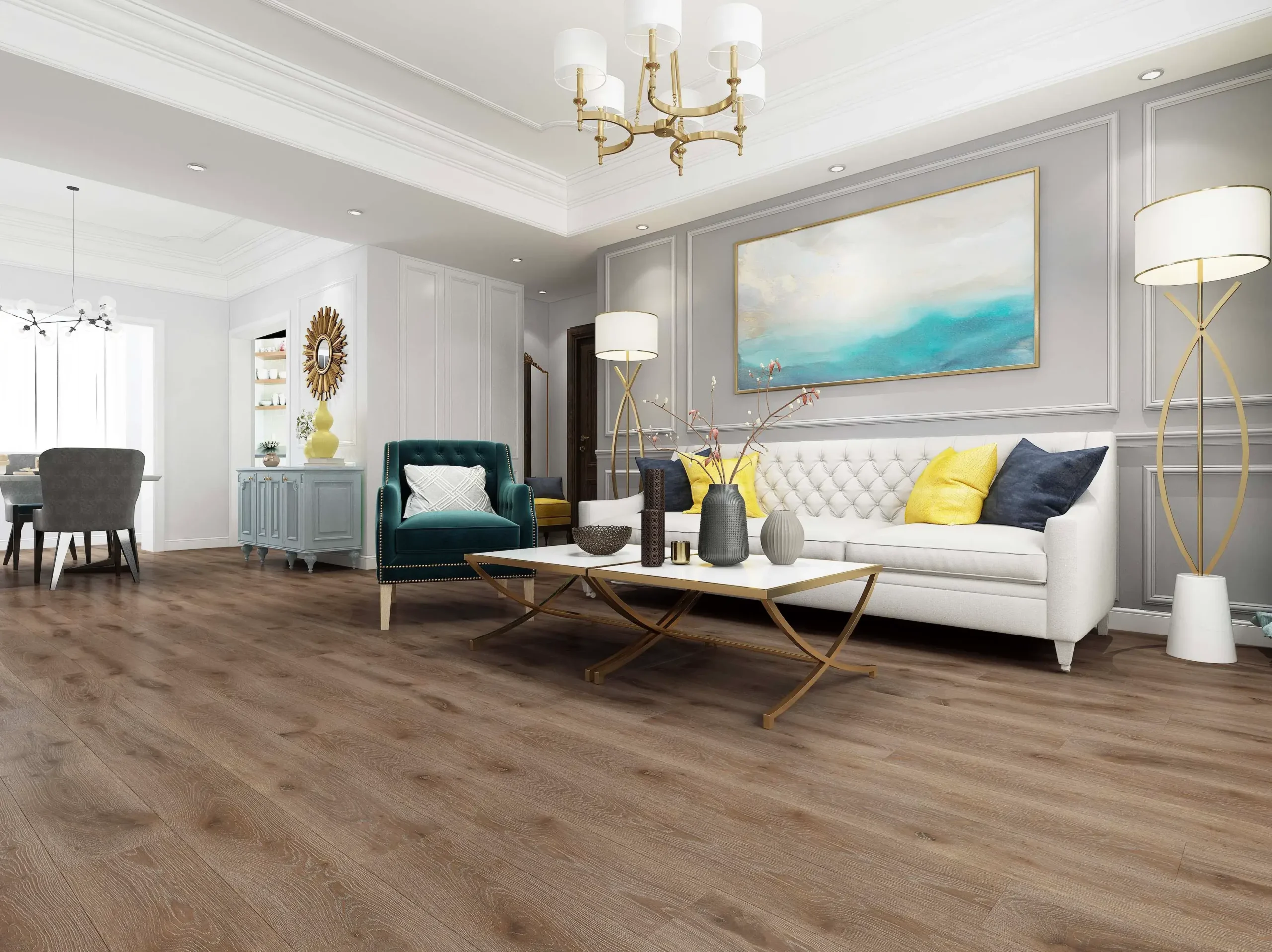Laminate flooring is a popular and affordable option for many homeowners who want to give their floors a fresh and modern look. Laminate flooring is made of synthetic materials that mimic the appearance of wood, stone, or tile. However, laminate flooring is not suitable for areas that are exposed to high levels of moisture, humidity, or temperature fluctuations. In this article, we will explain why laminate flooring is not a good choice for these areas and what are some better alternatives.
Why Laminate Flooring Is Not Good for Moist or Humid Areas
Laminate flooring consists of four layers: a wear layer, a design layer, a core layer, and a backing layer. The wear layer protects the design layer from scratches, stains, and fading. The design layer contains the image of the material that the laminate flooring is trying to imitate. The core layer is made of high-density fiberboard (HDF) or medium-density fiberboard (MDF), which are compressed wood fibers mixed with resin. The backing layer provides stability and moisture resistance to the laminate flooring.
The problem with laminate flooring is that the core layer is not completely waterproof. If water seeps through the gaps between the planks or the edges of the floor, it can cause the core layer to swell, warp, or buckle. This can ruin the appearance and functionality of the laminate flooring. Moreover, water can also promote the growth of mold and mildew, which can pose health risks and damage the subfloor.
Therefore, laminate flooring is not recommended for areas that are prone to water spills, leaks, or flooding, such as bathrooms, kitchens, laundry rooms, basements, or outdoor spaces. Even if the laminate flooring is labeled as water-resistant or waterproof, it is still not advisable to use it in these areas, as water resistance does not mean water-proofing. Water-resistant laminate flooring can withstand occasional spills or splashes, but not prolonged exposure to moisture or humidity.
What Are Some Better Alternatives to Laminate Flooring for Moist or Humid Areas
If you are looking for flooring options that can withstand moisture or humidity better than laminate flooring, here are some suggestions:
- Vinyl flooring: Vinyl flooring is made of plastic materials that are completely waterproof and durable. Vinyl flooring can mimic the look of wood, stone, or tile, and comes in various styles, colors, and patterns. Vinyl flooring is easy to install, clean, and maintain, and is resistant to scratches, stains, and fading. Vinyl flooring is also cheaper than laminate flooring and can be used in any area of the house, including bathrooms, kitchens, laundry rooms, basements, or outdoor spaces.
- Tile flooring: Tile flooring is made of ceramic, porcelain, or natural stone materials that are waterproof and hard-wearing. Tile flooring can create a classic or contemporary look for your floors, and comes in a wide range of sizes, shapes, colors, and textures. Tile flooring is easy to clean and sanitize, and is resistant to mold, mildew, and bacteria. Tile flooring is also suitable for radiant heating systems, which can provide warmth and comfort in cold or damp areas. Tile flooring is more expensive than laminate or vinyl flooring, and requires professional installation, grouting, and sealing.
- Engineered wood flooring: Engineered wood flooring is made of real wood veneers that are bonded to a plywood or HDF base. Engineered wood flooring can offer the natural beauty and warmth of hardwood flooring, but with more stability and resistance to moisture, humidity, and temperature changes. Engineered wood flooring can be installed over any type of subfloor, and can be sanded and refinished several times. Engineered wood flooring is more expensive than laminate or vinyl flooring, and requires proper care and maintenance to prevent scratches, dents, or fading.
Conclusion
Laminate flooring is a great option for many areas of the house, but not for those that are exposed to high levels of moisture, humidity, or temperature fluctuations. For these areas, you should consider vinyl flooring, tile flooring, or engineered wood flooring, which can provide better performance, durability, and aesthetics. By choosing the right flooring option for your needs, you can enhance the value and appeal of your home.

